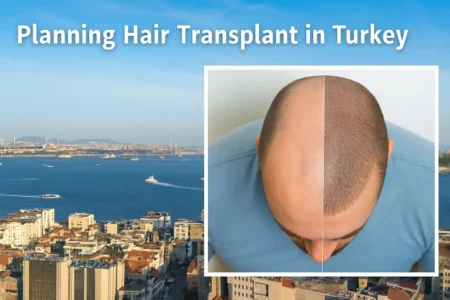Why Turkey Leads the Conversation
Turkey’s medical travel scene has turned a once-complex hair transplant into a streamlined, value-driven trip. If you’re comparing hair transplant Turkey packages with clinics in Europe or the U.S., you’ll notice two things quickly: experienced surgeons offering fue hair transplant at scale, and clear pricing that keeps hair transplant cost more predictable than in many Western markets. Add short flight times from much of Europe, multilingual teams, and tourism-ready logistics, and Turkey stands out for patients who want efficient treatment without compromising quality.
FUE Hair Transplant, Explained Simply
Fue hair transplant is the most common technique foreign patients choose in Turkey. Instead of removing a strip of scalp, FUE extracts individual follicular units (grafts) from the donor area—usually the back or sides of the head—and implants them in thinning or bald areas.
What this means for travelers:
- Minimal scarring: Tiny extraction points typically heal in days.
- Faster recovery: Many patients feel ready to venture out 48–72 hours after surgery, making a long weekend trip feasible.
- Precision: Surgeons can vary the angle, density, and distribution of grafts to match natural growth patterns.
In reputable clinics, the surgeon conducts the design and key steps, while trained technicians assist during graft handling and placement. For complex cases (e.g., large crown work or repair procedures), your clinic might blend FUE with other methods or stage the work over multiple sessions to protect the donor area and ensure realistic outcomes.
What Drives Hair Transplant Cost—and Why Turkey Hair Transplant Cost Stays Competitive
Multiple factors influence hair transplant cost anywhere in the world:
- Number of grafts: The most significant driver. A 2,500–3,500 graft session is common for many male pattern hair loss cases.
- Surgeon’s experience and reputation: Board certification, years in practice, and an international portfolio may carry a premium.
- Technique and tools: Fue hair transplant with advanced punch systems or adjunctive imaging adds precision (and cost).
- Clinic accreditation and safety standards: JCI accreditation or international society membership signals investment in quality.
- Package scope: Airport transfers, hotel stays, translation, aftercare kits, and PRP add-ons can shift the bottom line.
Typical ranges (indicative, clinic-reported averages):
- Turkey hair transplant cost: Approximately $1,800–$3,500 for a standard FUE session of 2,500–3,000 grafts.
- Western Europe: $5,000–$10,000+ for similar graft counts.
- United States: $6,000–$15,000+ depending on market and surgeon.
Even with flights and accommodation, many travelers find the total hair transplant expenses in Turkey remain below single-procedure fees in their home country.
Sample Budget: A 3-Day Istanbul Itinerary
Below is a realistic, mid-range example for a solo traveler:
- Procedure (2,800 grafts, FUE): $2,600
- Flights (from major EU hub): $250–$450
- Hotel (2 nights in a 4-star partner property): Often included; if not, $180–$260 total
- Transfers and translation: Often included in package (otherwise $80–$120)
- Medications and aftercare kit: $40–$80
- Meals and local transport: $60–$120
Estimated total hair transplant expenses: $3,130–$3,580, depending on add-ons.
If you select premium hotels or VIP packages, expect $500–$1,000 more.
Hair Transplant and Travel Timeline: What to Plan Before You Fly
For most visitors, hair transplant and travel planning go hand in hand. A straightforward timeline looks like this:
- 4–6 weeks out: Request a virtual assessment. Send high-quality photos or a short video; some clinics use 3D scalp capture via smartphone guidance for better graft estimation.
- 2–3 weeks out: Lock in your date. Confirm turkey hair transplant cost, package inclusions, and the number of grafts targeted.
- 1 week out: Follow pre-op guidance—no blood thinners, limit alcohol, and arrange button-down shirts for post-op comfort.
- Day 0 (arrival): Pre-op consult, hairline design, and consent. Total clinic time for FUE is often 6–8 hours.
- Day 1: Post-op check, bandage removal, and first wash tutorial.
- Day 2–3: Fly home with instructions, aftercare kit, and app-based follow-up.
Quick note for women:
Female pattern hair loss planning may involve hormonal assessment and more conservative donor management. Ask about unshaven or partially shaved options if discretion matters.
Hair Transplant Before and After: Realistic Milestones and What Images Reveal
Seeing hair transplant before and after examples helps set expectations, but understanding the timeline is crucial:
- Weeks 1–3: Redness fades. Some implanted hairs shed—this is normal “shock loss.”
- Months 3–4: Early regrowth begins, often fine and fair.
- Months 6–8: Noticeable thickening; many patients say the hairstyle finally starts to cooperate.
- Months 12–15: Final density and texture maturation.
How to read hair transplant images before and after:
- Density vs. coverage: Look for close-up shots at multiple angles, not just a single flattering photo.
- Hairline artistry: Natural hairlines are slightly irregular, with soft micro-angles at the temples.
- Lighting consistency: True before/after pairs use similar lighting, camera distance, and hairstyle.
Visual tip:
Ask clinics to share hair transplant images before and after specific to your hair type, norwood level (for men), and ethnic background. This sets a more accurate benchmark for your case.
New Angle - How Digital Clinics Personalize Your Plan
A growing differentiator in Turkey is the digitalization of the patient journey. While price and surgeon skill still matter most, technology is reshaping planning and aftercare:
- AI hairline simulation: Clinics use facial analysis to suggest hairline shapes that harmonize with your proportions and future hair loss patterns.
- 3D graft mapping: Some centers employ scalp imaging to estimate donor capacity, highlight risk zones, and prevent overharvesting.
- App-based aftercare: Daily checklists, wound-healing trackers, and secure chat keep the surgeon’s team close—reducing anxiety for international patients.
- Data-driven consent: Clinics are starting to share anonymized aggregate outcomes (for similar graft counts and ages), giving travelers a more realistic sense of results.
Beyond aesthetics, this digital layer supports mental well-being. Many travelers report lower pre-op stress when they can preview outcomes and message their care team anytime. That psychological reassurance—especially when traveling alone—can be as valuable as any package inclusion.
Choosing a Safe Clinic: What to Verify
A compelling turkey hair transplant price is great, but safety should lead:
- Surgeon involvement: Confirm who designs the hairline and performs key incisions.
- Accreditation and affiliations: Look for national licensing, international society memberships, and transparent infection control protocols.
- Conservative planning: Beware of promises of “unlimited grafts” or instant density. Donor areas are finite; realistic plans protect long-term aesthetics.
- Clear photography: Insist on standardized hair transplant images before and after—multiple angles, consistent lighting, and time-stamped milestones.
- Informed consent: You should receive risks, alternatives, and aftercare in writing, in your language.
Frequently Asked Questions
Is FUE the best for everyone?
Fue hair transplant suits most travelers due to faster recovery and minimal scarring. Some cases may benefit from combined approaches—your surgeon will advise.
Will I need a second session?
If hair loss progresses, a second session may be considered. Responsible clinics plan with future loss in mind to reduce the need for large repeat procedures.
How soon can I work or sightsee?
Desk work: Often in 2–3 days. Light sightseeing: Also 2–3 days, with a hat approved by your clinic. Avoid intense sun and heavy exercise for at least two weeks.
Conclusion: Make Cost Work for You - Without Compromising Care
Turkey offers a rare balance of experience, access, and value. With transparent hair transplant cost structures, technology-enhanced planning, and robust aftercare, travelers can approach the journey with confidence. Focus on surgeon quality, verify safety standards, and use realistic hair transplant before and after benchmarks to calibrate expectations. Done right, the combination of skill, price, and digital support creates a smooth, reassuring experience.
Ready to explore your options? Book a free virtual assessment with our medical team. Share photos, receive a personalized fue hair transplant plan, and get a detailed breakdown of turkey hair transplant cost and hair transplant expenses—before you book your flight.


